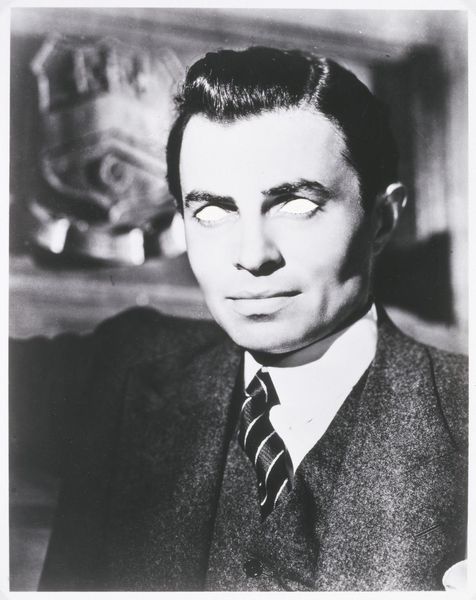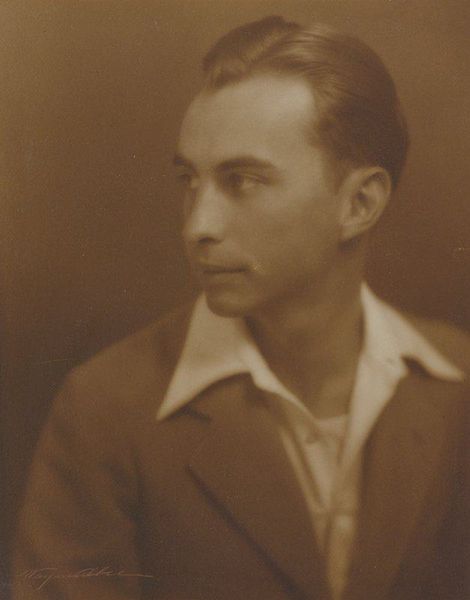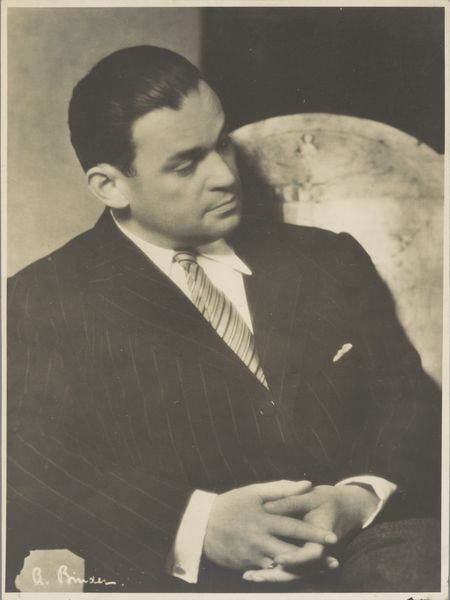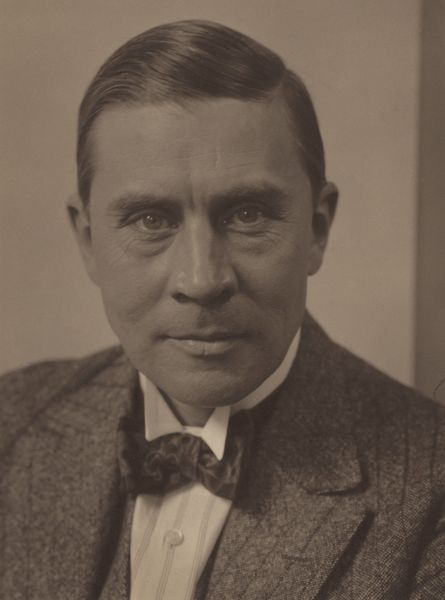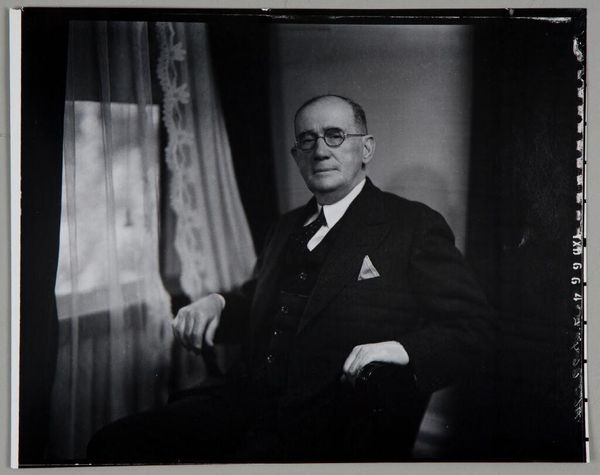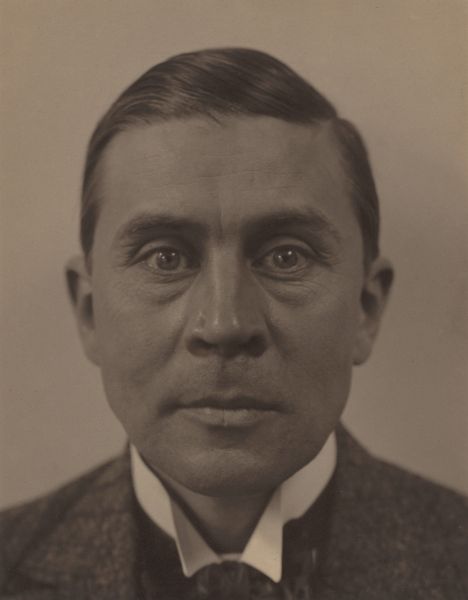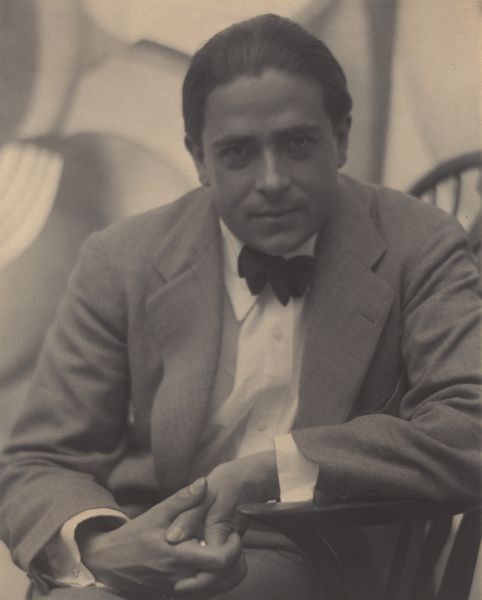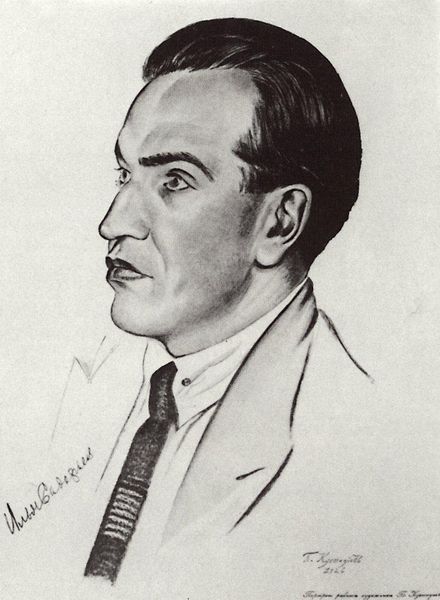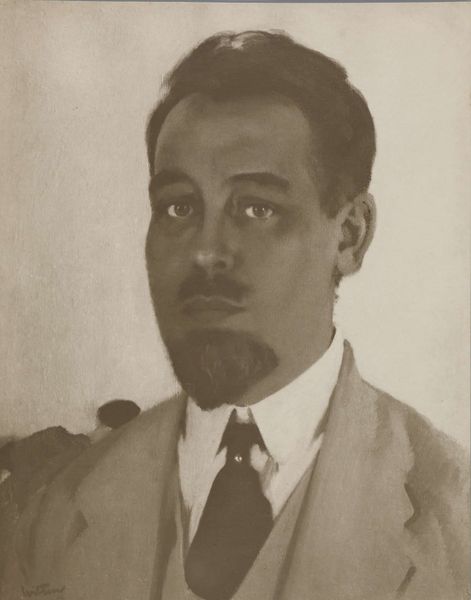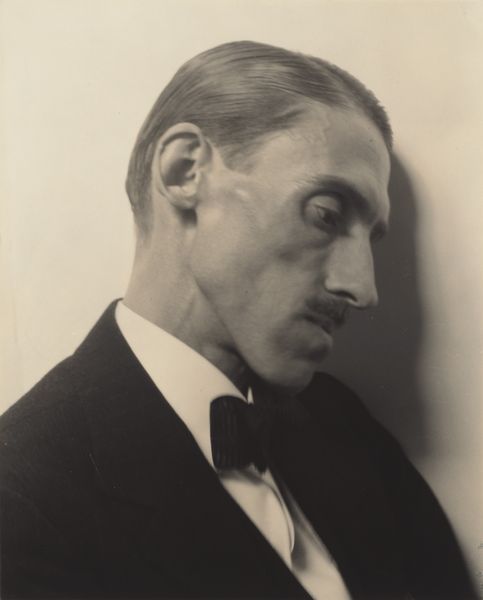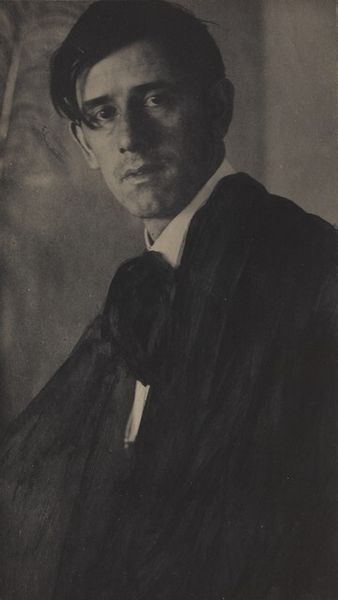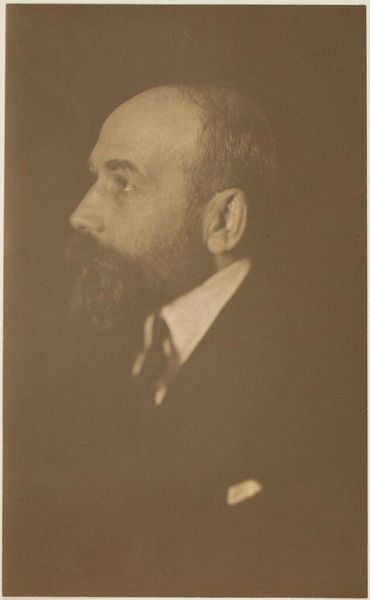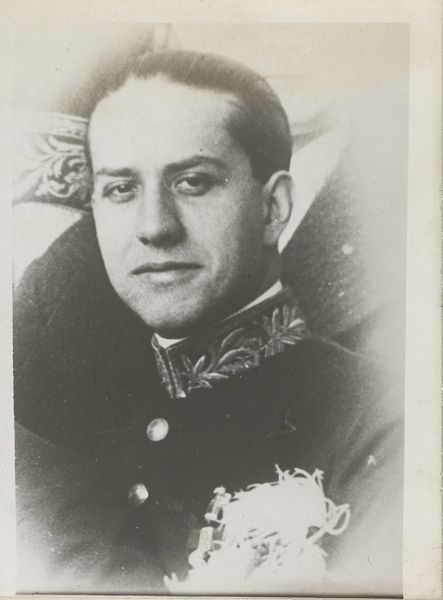
photography, gelatin-silver-print
#
portrait
#
photography
#
gelatin-silver-print
#
modernism
#
realism
Dimensions: image/sheet: 25 × 20 cm (9 13/16 × 7 7/8 in.)
Copyright: National Gallery of Art: CC0 1.0
Editor: This is Dorothea Lange's gelatin-silver print from 1929, titled "Untitled, portrait of William." It feels like a very composed, formal image, almost staged. How do you interpret this work? Curator: Considering its creation in 1929, before Lange's iconic Depression-era photography, this portrait offers a glimpse into the artistic and social context she navigated. We see a man presented in the visual language of success and aspiration. How does the "everyday" relate to portraiture as an established genre with all of its implied conventions of social position? Editor: I see what you mean, he definitely looks affluent. Curator: The deliberate choice to photograph him in a suit with a pocket square evokes particular social ideals associated with class and masculinity during that time. How does this influence the viewers relationship to the artwork and subject in terms of seeing him as a “type”? Editor: It’s interesting, the softness in his face and his gaze seem to challenge that, it makes him look contemplative. Curator: Exactly. Lange often questioned the existing politics of imagery. A powerful photograph doesn't simply mirror reality; it actively participates in shaping perceptions and understanding. Do you see hints of that approach here, prefiguring her later, more overtly political work? Editor: I see that now, this wasn't just documenting, it was commentary. That gives me a new appreciation for Lange's eye, even early in her career. Curator: Indeed. It illustrates how even seemingly straightforward portraiture can be deeply embedded within socio-political conversations.
Comments
No comments
Be the first to comment and join the conversation on the ultimate creative platform.
